The story of winemaking stretches back thousands of years, intertwining with the very fabric of human civilization. As an art and science, it has evolved from simple fermentation techniques to a complex interplay of viticulture, enology, and global commerce. Tracing the origins of the earliest wineries leads us to ancient landscapes where viticulture played a central role in society.
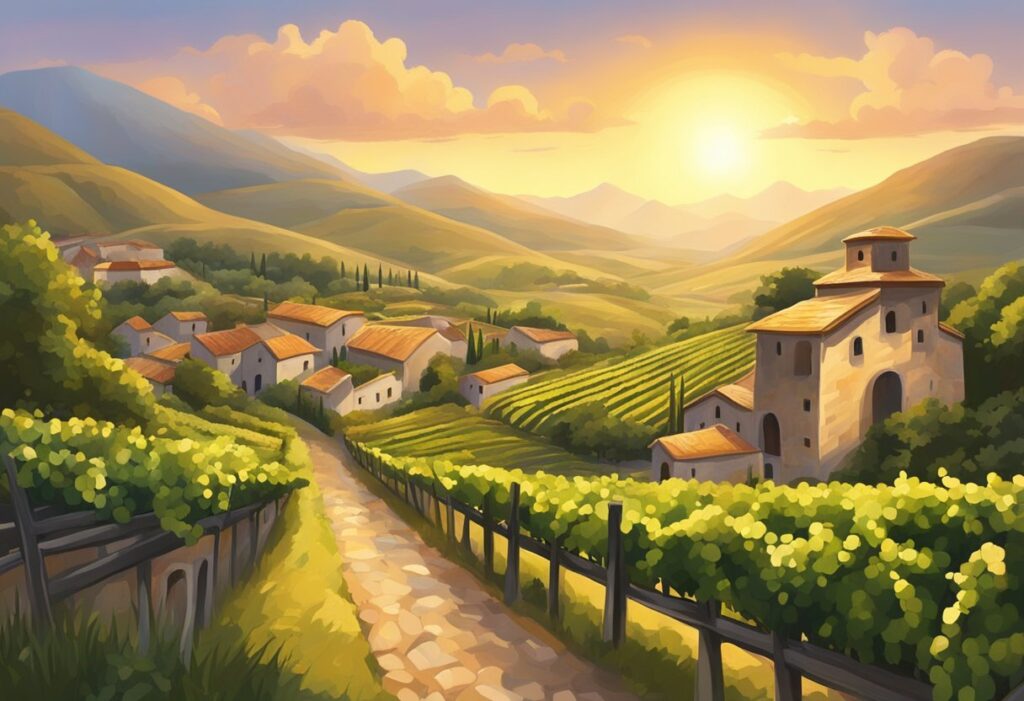
Discovering the oldest wineries in the world is a journey through time, where the remnants of ancient presses and fermentation vats tell stories of a rich heritage. These historic sites, from the sun-drenched hills of the Italian countryside to the fertile valleys of Armenia, hold the key to understanding how wine culture has been cultivated. Every chalice of wine is a testament to the dedication and ingenuity of generations of vintners.
Key Takeaways
- Winemaking has a storied history reflecting human innovation and cultural significance.
- Ancient wineries represent the long-standing relationship between people and vine cultivation.
- The evolution of wineries has been shaped by numerous factors including religion, historical events, and technological advancements.
Origins of Winemaking
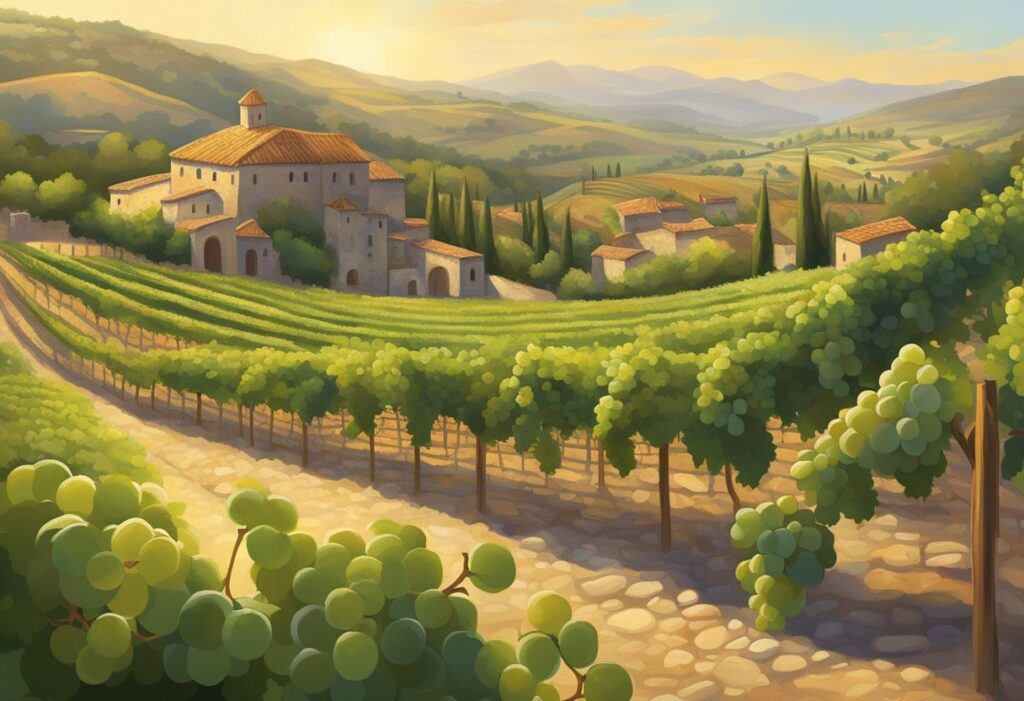
In tracing the history of winemaking, you’ll discover a practice deeply rooted in ancient civilizations, beginning in the Neolithic period and perfected across millennia.
Neolithic Period and Viniculture
During the Neolithic period, agriculture saw profound developments, including the cultivation of grapes for viniculture. The oldest known winemaking evidence dates back to around 6000 BC in regions that are part of present-day Georgia, where large-scale wine production began. Viticulture became a significant part of the culture and lifestyle in these ancient societies, laying the groundwork for the winemaking traditions we see today.
Vitis Vinifera and Wild Grapevines
The domestication of Vitis vinifera, a grape species native to the Mediterranean region, was a pivotal moment in the history of winemaking. This species provided the genetic foundation for the majority of wines produced around the world. The cultivation of wild grapevines was not just about food but also about the craft and science of fermenting grapes into wine, evidencing an early understanding of agriculture and chemistry.
The Role of Ancient Sumer and Egypt in Winemaking
Winemaking knowledge and techniques further developed in ancient civilizations like Sumer and Egypt. The Sumerians were known for their innovations in fermentation and storage methods, influencing winemaking processes across the ancient world. By around 3000 BC, Egypt had established highly organized vineyards and used wine for both ceremonial and medicinal purposes, enhancing the cultural significance of winemaking in human history.
Development of Wineries in Antiquity
The ancient world saw significant advancements in winemaking, with Greece and Rome being pivotal in the evolution of winery technology, including the development of wine presses that heralded a new era of wine production.
Wine Production in Ancient Greece
In Ancient Greece, you would find wine as a staple of both culture and economy. The Greeks refined fermentation techniques and strategized vineyard placements to optimize the wine’s quality. Mosaics in Paphos reveal the god Dionysos, illustrating the deep cultural connection to wine.
Wine was a central part of symposiums, where ideas were exchanged over cups filled with the revered beverage. This period marked a step forward in the history of wineries, showcasing the integration of wine into the fabric of Greek society.
Winery Advances in Roman Times
During Roman times, wine production became more systematic with enhanced focus on storage and distribution. The Romans implemented large-scale winery facilities, which included the use of amphoras for the storage and transport of wine. Viticulture and winemaking had become sophisticated businesses, with the Romans cataloging grape varieties and documenting detailed winemaking techniques. This knowledge deeply influenced winemaking practices for centuries to follow.
Innovations in Wine Press Technology
Wine press technology saw significant innovation when the Romans pioneered the use of both manual and mechanical presses. These innovations allowed for more efficient juice extraction and consequently a more reliable wine production process.
Early Roman wine presses involved the fermentation of grapes in large treading vats before pressing, which marked a notable advancement in winery technology. The introduction of screw presses provided a more consistent pressing method, ultimately resulting in higher quality wines.
Religious and Cultivated Perspectives on Wine
Wine has a storied history with deep religious significance, and its cultivation has been closely intertwined with ritualistic practices. Here’s how wine plays a role in religious ceremonies and how grape wine has been cultivated within these contexts.
Wine in Religious Ceremonies
From ancient times, wine has been more than just a beverage; it has served as a symbol of divinity and community. In religious ceremonies, wine often represents something sacred. For example, in Christianity, wine is a pivotal element of the Eucharist, symbolizing the blood of Christ.
This narrative is supported by scripture and by the practice of winemaking within monastic communities. The transformation of water into wine during the Marriage at Cana is among the many biblical accounts emphasizing wine’s spiritual importance.
Grape wine also plays a crucial role in Judaism, where it is consumed during Shabbat and festivals, like Passover, as a symbol of joy and celebration. Its use is prescribed in the Torah, which underscores its longstanding presence in Jewish religious ceremonies.
Cultivation of Grape Wine in Religious Context
The act of fermenting grape wine has long been a cherished skill, largely overseen by religious institutions, especially in Europe. Monasteries, in their pursuit of self-sufficiency and hospitality, became centers of viticulture, refining techniques to produce quality wines.
They held extensive knowledge on grape varieties and the intricacies of vineyard care, often documenting and passing down this valuable information. Historical evidence suggests that these religious entities were instrumental in identifying and promoting the best grape vine cultivation practices.
In many regions, grape wine cultivation was endorsed by religion as a means to produce wine for both sacramental and ordinary use. With an emphasis on divine providence, these cultivated vineyards were viewed as blessings and tangible expressions of their faith. The history of wine cannot be disentangled from these religious and cultivated perspectives, which helped shape winemaking into both a craft and a ceremonial necessity.
The Importance of Wine in Medieval Europe

In medieval Europe, wine was much more than a beverage; it was a crucial part of societal structures, influencing commerce, agriculture, and the monastic way of life. Your understanding of this era is incomplete without recognizing the impact wine had on daily life and broader societal development.
Monastic Wineries and Viticulture
Monasteries were at the heart of winemaking innovation and viticulture during the medieval period. You might be surprised to learn that Benedictine and Cistercian monks played a pivotal role not just in spiritual affairs, but also in advancing the craft of wine production.
They significantly enhanced methods of vine cultivation and wine production, often acting as custodians of local wine knowledge and techniques. Their dedication is exemplified in the meticulous care of vineyards across Europe, notably in regions we recognize today as wine country, like Burgundy and Champagne in France.
European Wine Trade and Expansion
The trade of wine during medieval times was a driver of economic expansion, facilitating the spread of goods, culture, and ideas across Europe. Wine served as a key trading commodity in the bustling markets from France to the Rhine and Moselle regions. The importance of French wines is particularly notable, as they were extensively documented and highly sought after in England and beyond.
Beyond the intrinsic value of wine itself, the trade catalyzed the development of related industries and infrastructure, such as roads, inns, and maritime routes, which were essential for the transportation of barrels and bottles to the far reaches of the continent.
Remember, the monastic commitment to viticulture and the robust wine trade were fundamental to the social and economic fabric of medieval European society.
Old World Wineries and Vintners
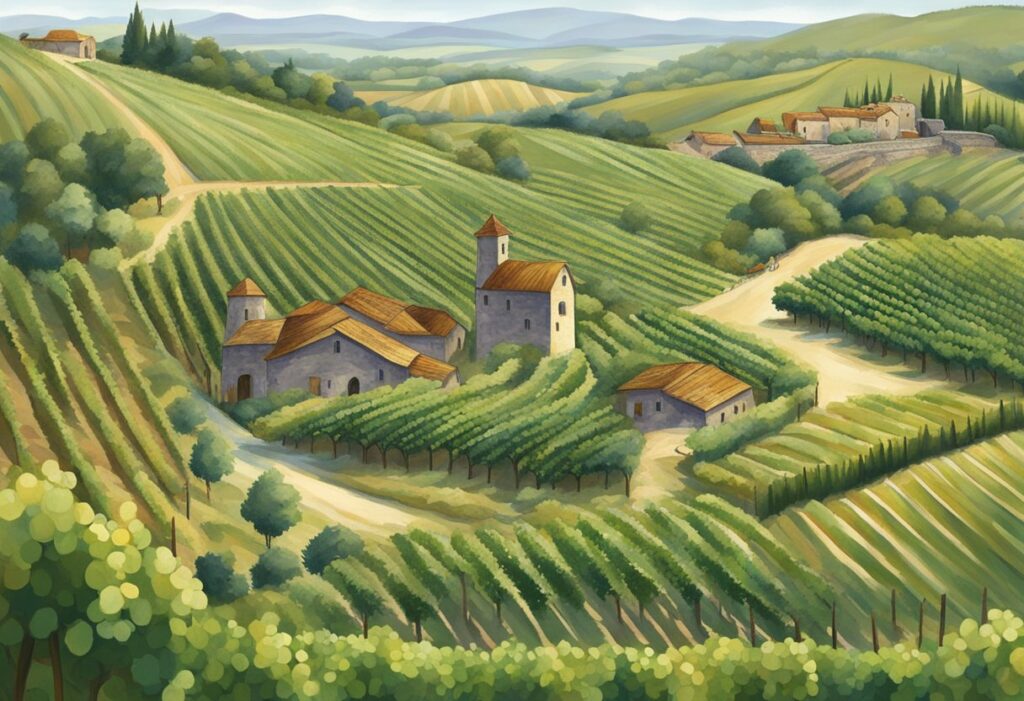
Old World wineries, with their deep-rooted histories and contributions to viticulture, have set the standards in the wine industry. You will find that some of the world’s oldest wineries are steeped in traditions that have shaped wine-making for centuries, particularly in France and Italy.
Iconic Old World Wineries and their Legacies
Château de Goulaine
- Founded: 1000 AD
- Location: Loire Valley, France
- Notable for: Being one of the oldest family-operated wineries in existence.
Schloss Johannisberg
- Founded: 1100 AD
- Location: Rheingau, Germany
- Notable for: Pioneering the concept of Spätlese wine, translating to “late harvest”.
Barone Ricasoli
- Founded: 1141 AD
- Location: Tuscany, Italy
- Notable for: The oldest winery in Italy known for its influence on the Chianti wine formula.
These legendary establishments continue to produce renowned wines, upholding their legacy within the fabric of the Old World wine narrative.
Influence of French and Italian Winemaking
France and Italy are not just countries with ancient vintners; they’re the bedrock of the wine industry, pioneering many techniques and styles.
French Winemaking:
- Burgundy and Bordeaux regions have set global benchmarks for fine wine production.
- Practices such as biodynamic and organic farming have been adopted worldwide.
- Contribution to oenological science and the wine classification system.
Italian Winemaking:
- Diverse wine styles from regions such as Tuscany and Piedmont.
- Introduction of wine appellation system Denominazione di Origine Controllata (DOC).
- Innovations in vineyard management and wine preservation.
Your understanding of Old World winemaking is incomplete without recognizing France and Italy’s pivotal roles in shaping modern viniculture.
Historic Wineries in the New World
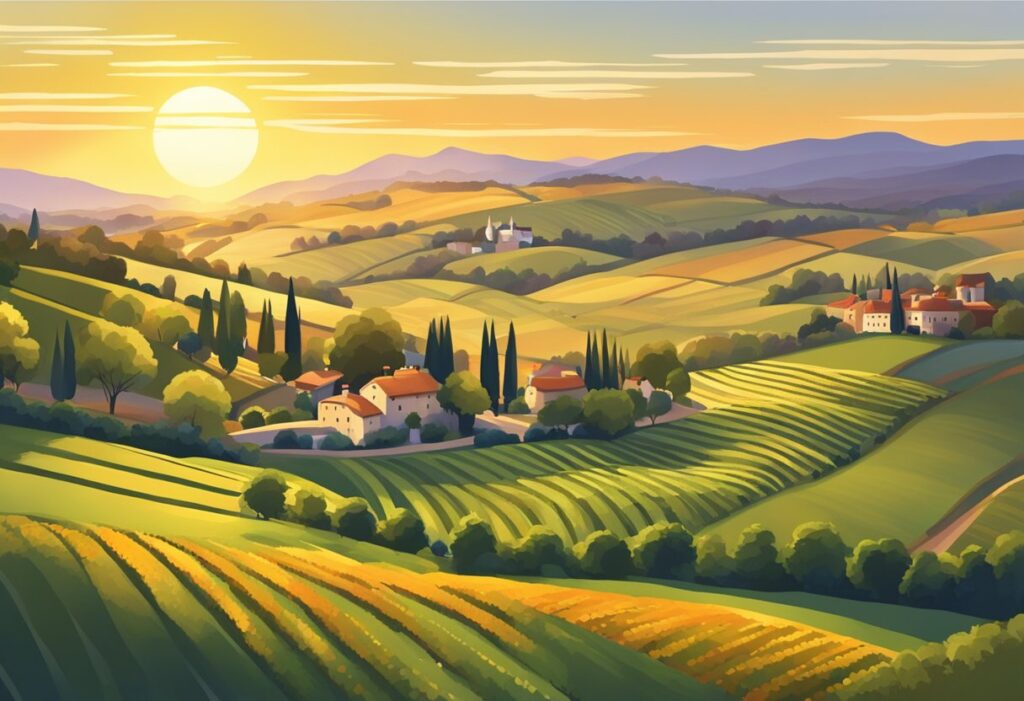
As you explore the tapestry of the New World’s vinicultural history, you’ll discover that California played a pivotal role in the development of wineries across North America.
The Emergence of Wineries in the Americas
When tracing the origins of wineries in the Americas, it’s crucial to underline the impact of the Spanish missionaries. In your journey through the history of American wine, you’ll find that the Spanish were instrumental in introducing the mission grape to the region. Initially cultivated for sacramental wines in the late 18th century, these vineyards laid the foundation for the wine industry throughout California and the broader United States.
Influence of European Immigrants on American Viticulture
Your understanding of North American viticulture is not complete without recognizing the influence of European immigrants. Key figures such as Charles Krug and the establishment of the Inglenook winery in the mid-19th century signaled a pivotal shift. These immigrants brought innovative viticultural techniques and a commitment to winemaking that transformed California’s landscape into a competitive player in the global wine market, showcasing the finesse of New World wines.
The Impact of Historical Events on Wineries
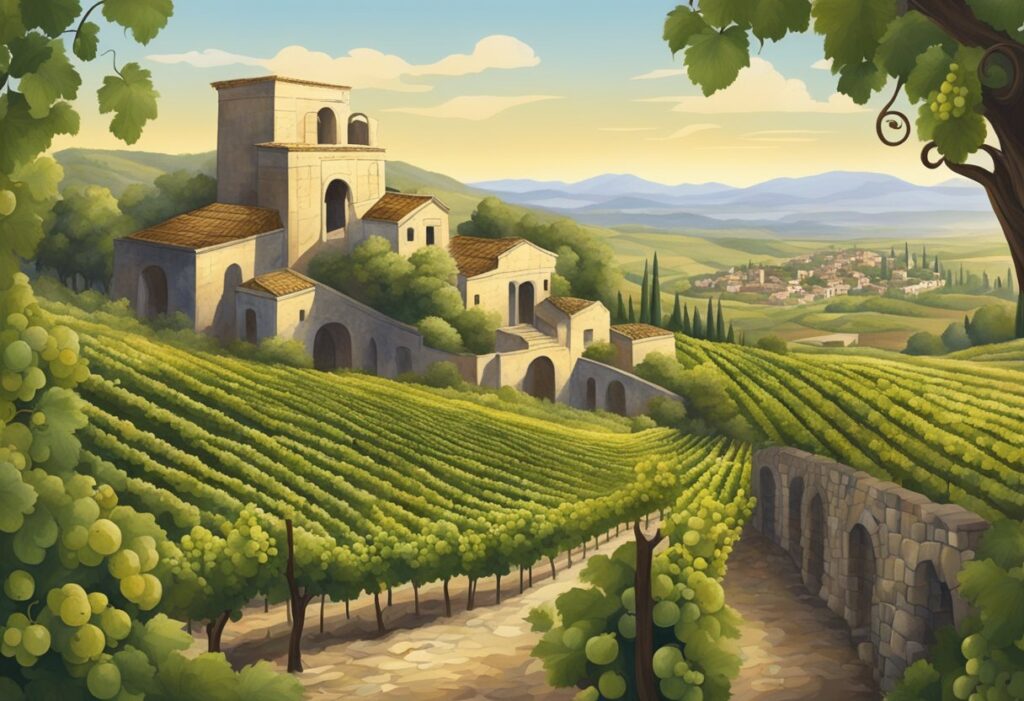
Throughout history, events like Prohibition and the Phylloxera epidemic have had profound impacts on wineries, significantly shaping the wine industry in countries such as the United States, France, and Germany.
Prohibition and Its Effects on American Wineries
When Prohibition was enacted in the United States in 1920, it dealt a severe blow to the wine industry. You would find that American wineries were suddenly illegal, throttling a once-flourishing industry. Vintners either had to shut down or find loopholes to survive—some turned to producing sacramental wine, while others sold “wine bricks,” concentrated grape juice to be dissolved in water (often with unintended fermentation).
Phylloxera Epidemic and Its Consequences
The Phylloxera epidemic originated in the late 19th century and was nothing short of catastrophic for European wineries, particularly in France. This tiny insect, inadvertently introduced from North America, destroyed vineyards as it fed on the roots of grapevines.
The solution, grafting European vines onto resistant American rootstock, took years to implement, and in the interim, many French winemakers immigrated to areas untouched by phylloxera, such as the Rhine region in Germany, transforming the global wine landscape.
Modern Innovations in Winemaking
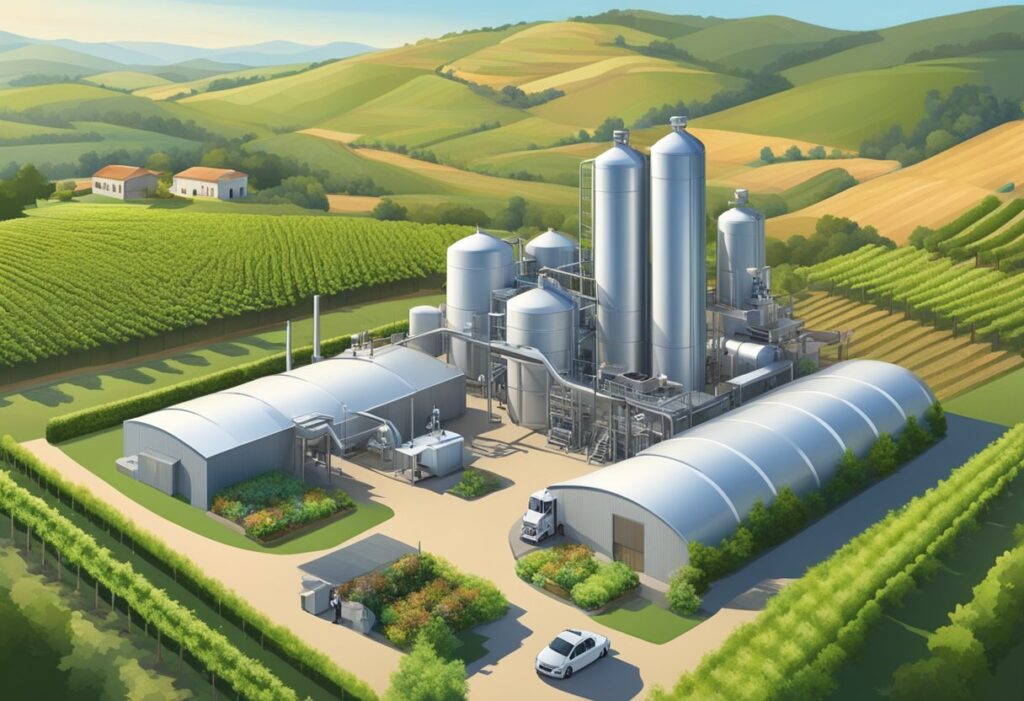
Through the integration of advanced technology and contemporary vinicultural practices, you can observe a revolution in the art of winemaking. This transition marks a significant shift from ancient methods to a new era where precision and consistency are paramount.
Technological Advances in Winery Equipment
Winery equipment has seen remarkable technological evolution. Instrumentation like the colorimeter, which is critical in measuring acid levels in wine, exemplifies advancements that have contributed greatly to quality control. André Tchelistcheff, a notable enologist, utilized such technology to refine the winemaking process, making impeccable flavors and textures achievable. Learn more about his contributions via the National Museum of American History.
Moreover, innovations in wine production do not stop at analysis. Modern equipment encompasses automated grape sorting systems, precision fermentation tanks, and complex filtration methods. These tools enhance every step of the winemaking process, from the moment grapes are harvested to the final bottling of wine.
Contemporary Trends in Vinicultural Practices
When you consider contemporary vinicultural practices, two pivotal trends emerge. First, sustainable and organic viticulture is gaining momentum, encouraging vintners to cultivate grapes with minimal environmental impact. Second, the industry is exploring the potential of artificial intelligence (AI) and data analytics to optimize vineyard management and predict grape yields with greater accuracy, as noted by Forbes.
These contemporary practices are not confined to the vineyard; they affect the winery workflow as well. Innovations like precision fermentation can now control the fermentation environment to accentuate desired wine characteristics. Furthermore, aging technology is being researched extensively to better understand and control this critical phase of winemaking.
Wineries and Wine Regions of The World
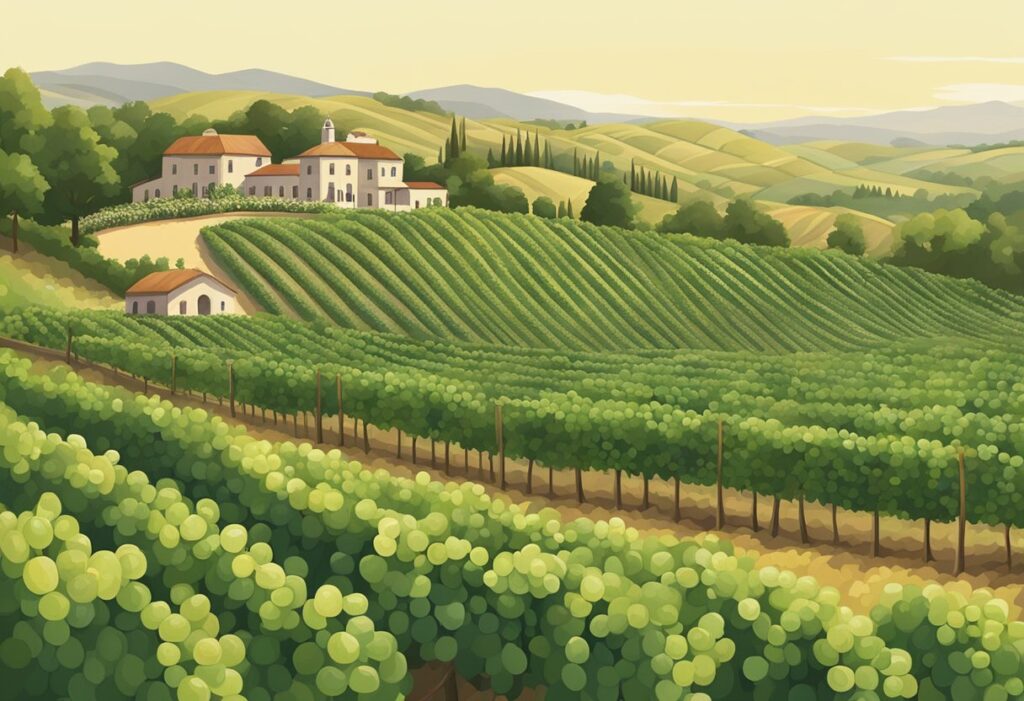
Discover the longstanding heritage and geographical diversity of wineries and wine regions across the globe. From the Loire Valley to Napa Valley, each region offers a distinct taste of the world’s most celebrated wines.
Old World vs New World Wineries
Old World wineries, located in regions like France, Italy, and Germany, represent the birthplace of winemaking with traditions dating back centuries. These regions, including France’s Loire Valley and Germany’s Rheingau, are renowned for their sophisticated wine varieties and strict adherence to historical production methods.
In contrast, New World wineries found in California, Australia, and South Africa reflect a more modern approach. Embracing innovation and new techniques, New World wineries often produce bolder and fruitier wines. For instance, Napa Valley has gained acclaim for its robust Californian wines, distinguishing itself as a leader in quality and viticulture experimentation.
Wine Regions from France to China
France stands as the epitome of fine wine, home to world-famous regions such as Bordeaux, Burgundy, and of course, the Loire Valley. Each French wine region possesses a unique identity, with Bordeaux synonymous with luxurious reds and Loire Valley celebrated for its crisp white wines.
Spanning from Europe to Asia, other notable Old World wine regions include Italy‘s Tuscany and Spain‘s Rioja, each offering an array of traditional wines steeped in local heritage. Moving to the East, China is emerging on the wine scene, particularly in areas like Ningxia, where the wine industry is experiencing rapid growth and innovation.
New World wine regions continue to flourish as well, with countries like Australia‘s Barossa Valley and South Africa‘s Stellenbosch producing internationally recognized wines. These regions contribute to the global wine mosaic, showcasing how diverse climates and innovative techniques can yield a wide variety of exceptional wines.

